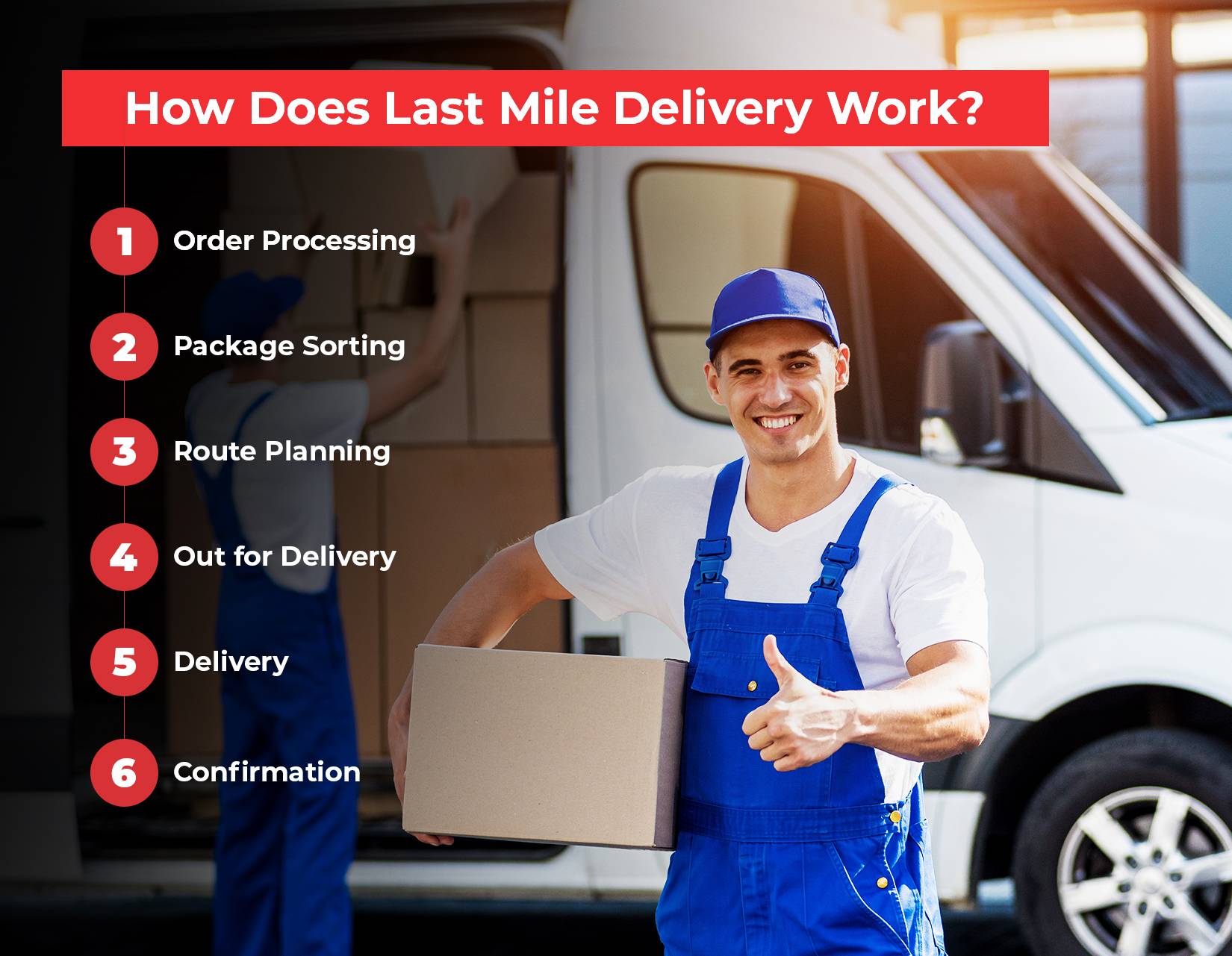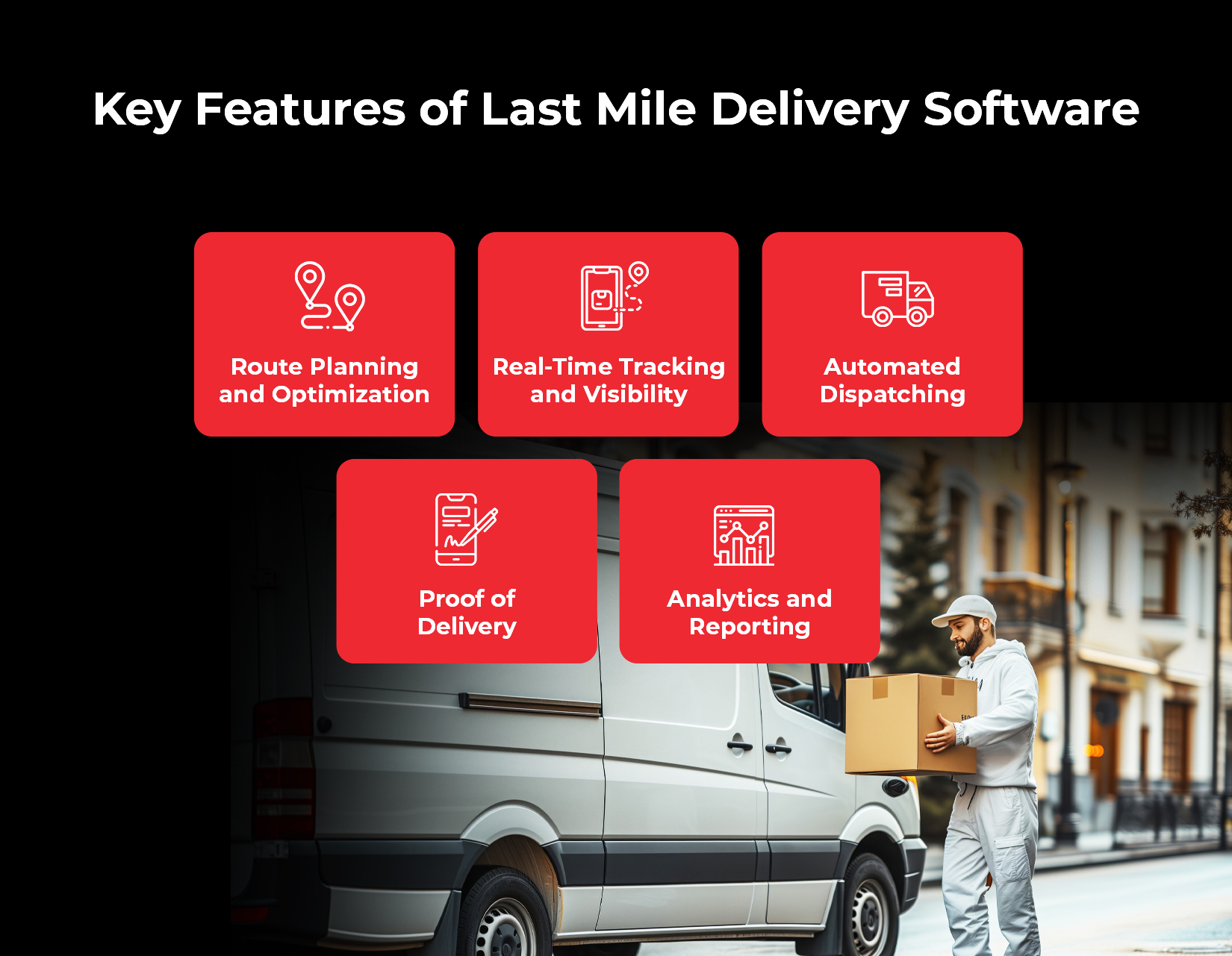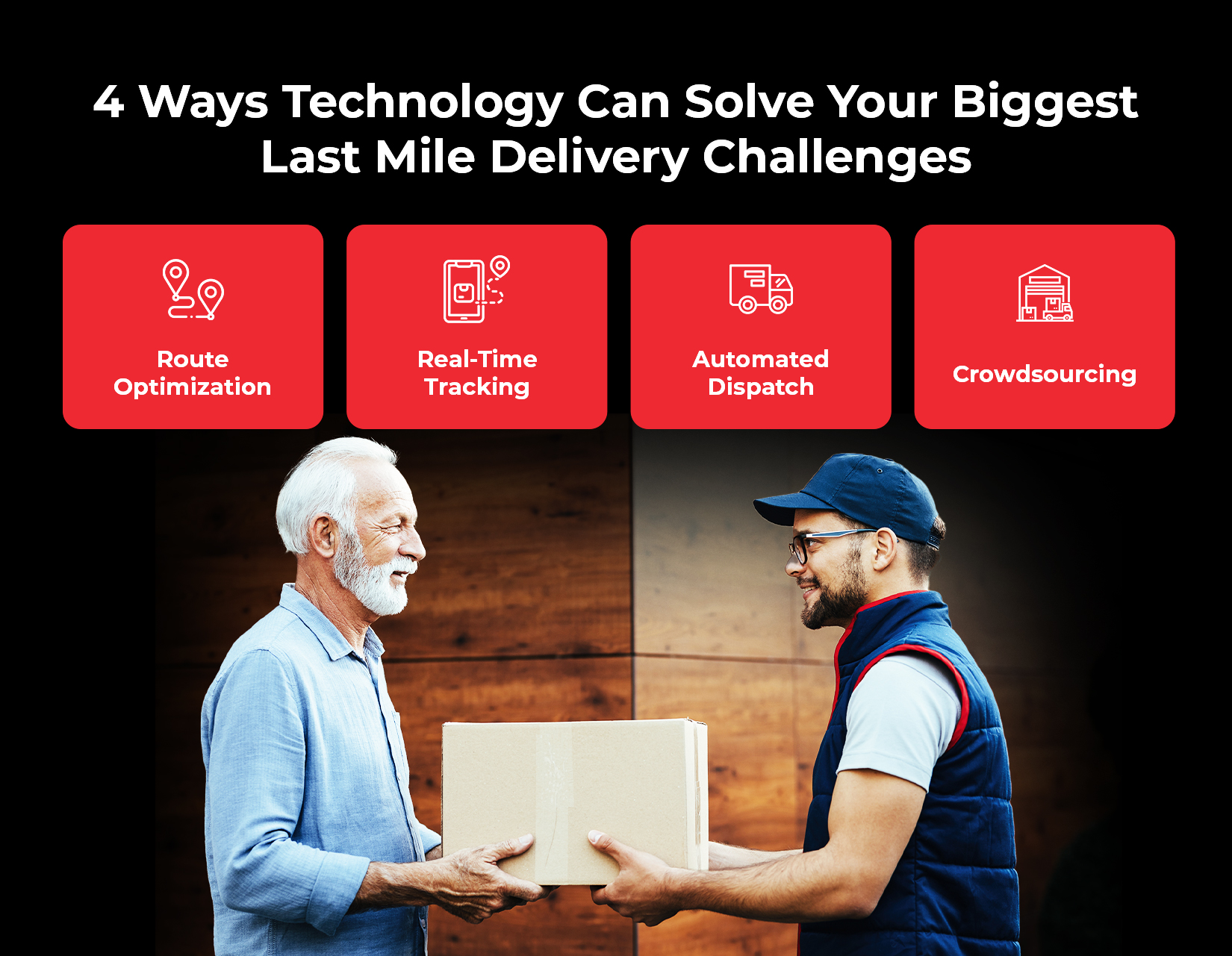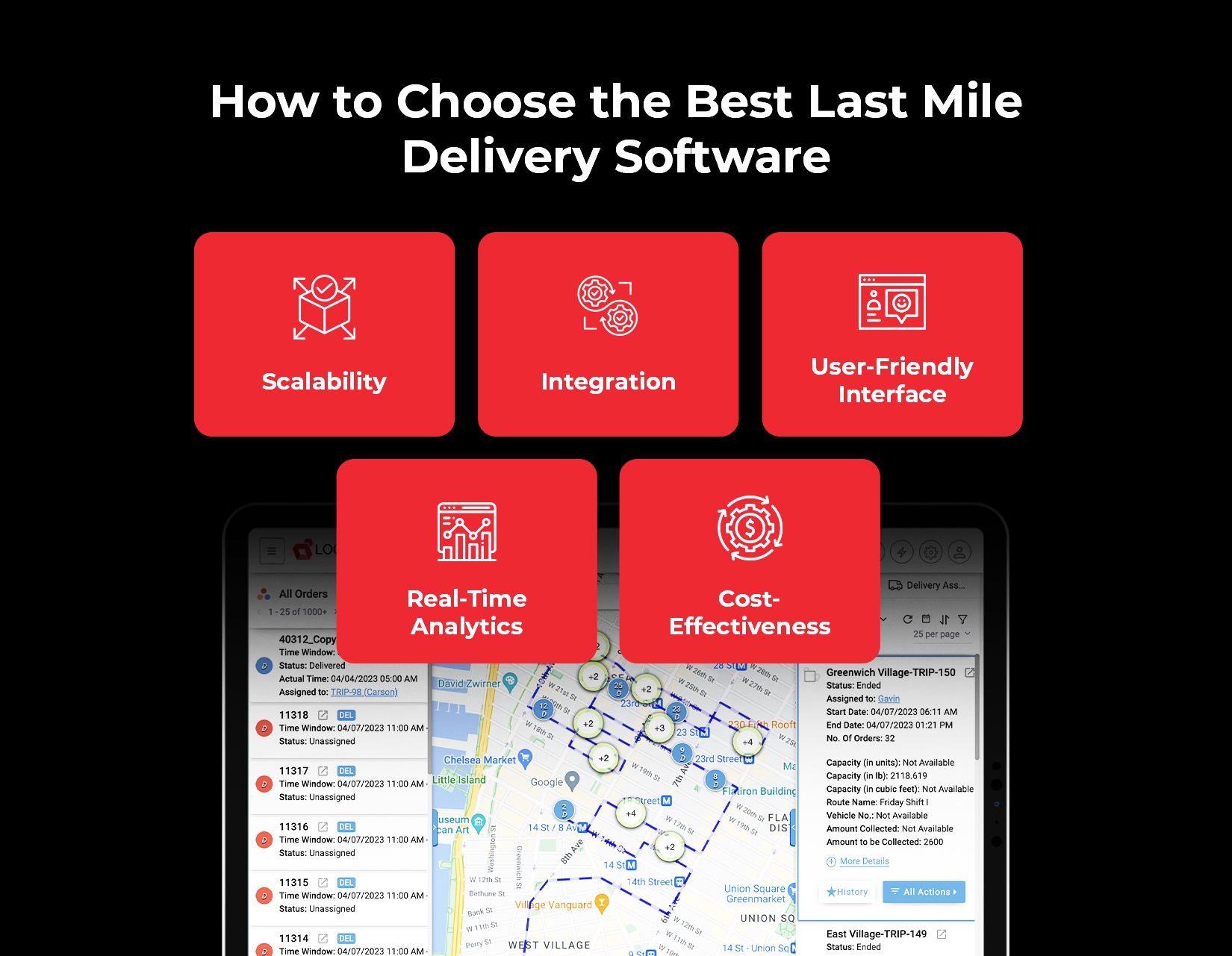
Last Mile Delivery Software: A Comprehensive Guide
In the rapidly evolving landscape of eCommerce and logistics, ensuring timely delivery is a top priority for businesses. Last mile delivery—the final step of the delivery process from a distribution center to the end customer—is a critical phase that can make or break customer satisfaction. As the demand for faster, more efficient deliveries grows, so does the need for robust last mile delivery software solutions. This comprehensive guide explores everything you need to know about last mile delivery software. Its significance, key features, and how it addresses the challenges in the last mile delivery process.
What is Last Mile Delivery?
Last mile delivery is the final stage in the logistics process where goods are transported from a transportation hub or warehouse to the final destination. It is generally the most costly and lengthy part of the supply chain, accounting for nearly 53% of total shipping costs. The primary goal of last mile delivery is to deliver items to customers as quickly and efficiently as possible. To achieve this, businesses rely on advanced last mile delivery software that offers real-time visibility, route optimization, and efficient management of delivery operations.
What is the “Last Mile Problem”?
The “Last Mile Problem” refers to the inefficiencies and high costs associated with the final leg of delivery. Unlike other stages of the supply chain that involve bulk shipments, last mile delivery is characterized by frequent stops, low drop sizes, and varying customer preferences. This complexity often leads to increased delivery times, higher costs, and challenges in managing resources effectively.
Studies show that failed deliveries account for 5-10% of all deliveries, further adding to costs and inefficiencies. Additionally, urban congestion, varying delivery windows, and the expectation for real-time tracking add layers of complexity. To tackle these challenges, businesses are turning to last mile delivery solutions that offer sophisticated tracking systems and advanced algorithms for route optimization.
How Does Last Mile Delivery Work?

Last mile delivery involves the following steps:
1. Order Processing: Once a customer places an order, the system processes it and sends it to the nearest warehouse or fulfillment center.
2. Package Sorting: The package is sorted based on delivery routes and assigned to a local delivery vehicle.
3. Route Planning: Delivery routes are optimized using Delivery Route Software to ensure efficiency and reduce costs.
4. Out for Delivery: The package is loaded onto the delivery vehicle and dispatched to the delivery address.
5. Delivery: The driver navigates to the customer’s location, often using GPS and routing software.
6. Confirmation: Upon successful delivery, the customer confirms receipt, and the delivery is marked as complete.
Key Features of Last Mile Delivery Software

Last mile delivery software solutions offer a range of features designed to streamline delivery processes and enhance efficiency:
1. Route Planning and Optimization:
Advanced algorithms to determine the most efficient delivery routes.
2. Real-Time Tracking and Visibility:
Allows customers to track their orders in real-time and provides businesses with visibility into driver locations and delivery status.
3. Automated Dispatching:
Automatically assigns delivery tasks based on proximity, delivery windows, and driver availability.
4. Proof of Delivery:
It helps in capturing digital signatures, photos, or other forms of proof of delivery to ensure accountability.
5. Analytics and Reporting:
The software provides insights into delivery performance, driver efficiency, and customer satisfaction.
Last Mile Delivery Software Market Stats and Growth
The global last mile delivery market is expected to grow from USD 108.1 billion in 2020 to USD 200.4 billion by 2027, at a CAGR of 9.3%. This growth is driven by the rise in eCommerce, increased consumer demand for fast delivery, and the adoption of advanced technologies such as AI, machine learning, and IoT in delivery management.
The market is also seeing a surge in investment in eCommerce last mile delivery software and autonomous delivery solutions, further propelling its growth. A study by ResearchAndMarkets forecasts that the market for last mile delivery robots alone will reach USD 10.4 billion by 2030, highlighting the increasing reliance on technology-driven solutions.
Last Mile Delivery Software Trends and Expectations from Gartner
1. Delivery Speed and Options:
Speed is becoming a need rather than a luxury. Consumers anticipate quick, adaptable delivery choices that meet their demands. According to Gartner, more than 70% of consumers think that delivery time is important while making purchases.
2. Real-Time Notifications:
Real-time notifications are now expected in this era of quick information. According to Gartner, eighty percent of customers are more inclined to make a purchase from a business that offers real-time tracking and updates during the delivery process.
3. Real-Time Modifications:
When it comes to last mile delivery, flexibility is essential. Businesses that provide real-time delivery plan updates enjoy a 30% improvement in customer retention rates, according to Gartner.
4. Driver Sustainability:
Sustainability has grown in significance within the logistics sector. According to Gartner, 40% of e-commerce deliveries by 2025 will include a sustainable delivery option, such carbon-neutral shipping or eco-friendly packaging.
5. Online Tracking:
With online tracking, customers can now see their items in real time, making it an essential part of last mile delivery. According to a MetaPack poll, 82% of consumers are more inclined to make a purchase from a store that offers real-time tracking.
6. Automation of Last Mile Delivery:
Automation is a significant trend that is changing the final step of delivery. McKinsey stated that the integration of automation technologies in logistics has the potential to decrease delivery expenses by as much as 40%.
4 Ways Technology Can Solve Your Biggest Last Mile Delivery Challenges

1. Route Optimization:
Advanced last mile delivery route optimization algorithms calculate the most efficient routes, reducing delivery times and fuel consumption. By optimizing routes, companies can ensure timely deliveries, minimize costs, and enhance customer satisfaction. According to a report by Capgemini, optimized routing can reduce delivery costs by up to 20%.
2. Real-Time Tracking:
Modern last mile tracking systems provide real-time visibility into delivery processes, allowing customers to track their orders and logistics managers to monitor delivery performance. This transparency helps reduce failed deliveries and enhances customer trust. In fact, 69% of customers expect to track their orders in real time, highlighting the importance of robust tracking capabilities.
3. Automated Dispatch:
Automation tools streamline the assignment of delivery tasks to drivers based on proximity, delivery windows, and traffic conditions. This not only improves efficiency but also reduces manual errors and operational costs. McKinsey research indicates that automated dispatch systems can improve delivery efficiency by up to 30%.
4. Crowdsourcing:
Leveraging crowdsourcing models allows companies to tap into a flexible, on-demand workforce. This model can significantly reduce delivery costs and improve scalability, particularly during peak seasons. Companies using crowdsourced delivery models have reported cost savings of up to 50% compared to traditional delivery models.
How Does Crowdsourcing Solve the Last Mile Problem?
Crowdsourcing in last mile delivery involves utilizing independent contractors or gig workers to handle deliveries. This model offers several advantages:
1. Flexibility: Crowdsourcing allows companies to scale their workforce up or down based on demand, which is particularly beneficial during peak periods or sudden surges in order volume. During the COVID-19 pandemic, companies using crowdsourcing reported a 40% increase in delivery capacity due to flexible labor options.
2. Cost Savings: By relying on a flexible workforce, businesses can reduce labor costs associated with full-time employees, such as salaries, benefits, and overtime pay. Research shows that crowdsourced deliveries can reduce labor costs by 20-30%.
3. Increased Reach: Crowdsourcing enables companies to extend their delivery network into areas that are less profitable for traditional delivery models, ensuring broader geographic coverage.
Products in Last Mile Delivery Software Market
Several products and solutions are available in the last mile delivery technology market:
1. Delivery Management Software: Platforms like LogiNext and Onfleet offer comprehensive delivery management solutions with features such as route optimization, real-time tracking, and automated dispatching.
2. Last Mile Delivery Tracking Software: Solutions that provide advanced tracking capabilities, allowing customers and businesses to monitor deliveries in real time. By 2025, it is estimated that 90% of companies will adopt real-time tracking systems to enhance transparency and customer experience.
3. Autonomous Delivery Solutions: Companies are exploring the use of drones, robots, and autonomous vehicles to enhance delivery speed and reduce costs. Amazon and Google have already launched pilot programs using drones for deliveries, with expectations that drone deliveries will reach 1 million annually by 2026.
4. Crowdsourcing Platforms: Solutions like Uber Eats and DoorDash that utilize gig workers for flexible, on-demand delivery.
How to Choose the Best Last Mile Delivery Software

1. Scalability:
Ensure the software can scale with your business as it grows, accommodating more orders, customers, and delivery locations.
2. Integration:
The software should seamlessly integrate with your existing systems, such as inventory management, CRM, and order management systems.
3. User-Friendly Interface:
A user-friendly interface for both administrators and delivery personnel is crucial for smooth operations and minimal training time.
4. Real-Time Analytics:
The ability to generate real-time reports and analytics on delivery performance, driver efficiency, and customer satisfaction is vital for continuous improvement.
5. Cost-Effectiveness:
Evaluate the total cost of ownership, including licensing fees, implementation costs, and ongoing maintenance, to ensure it fits your budget.
Best Last Mile Delivery Software in 2024
1. LogiNext Mile:
LogiNext Mile enhances customer satisfaction with features tailored for various industries like CEP, F&B, transportation, retail, and eCommerce. By streamlining first, middle, and last mile logistics, LogiNext boosts order efficiency and improves communication, driving repeat business and increased revenue.
2. Locus:
Locus is a logistics optimization platform using AI and data-driven technology to boost efficiency and visibility in logistics and delivery operations. It offers software solutions to help businesses optimize routes, manage deliveries, and enhance overall supply chain performance.
3. FarEye:
FarEye is a global logistics management platform that helps businesses optimize supply chain and delivery operations. It enhances efficiency with real-time visibility, automation, and analytics, serving industries like e-commerce, retail, logistics, and manufacturing for better supply chain management and last mile delivery.
4. Shipsy:
Shipsy is a logistics and supply chain management platform offering tools to streamline shipping, freight forwarding, and logistics. Its solutions, including shipment tracking, inventory management, and order processing, leverage digital technologies to enhance efficiency, visibility, and communication.
5. Onro:
Onro is systematic last mile delivery software offering complete visibility for an enhanced customer experience. They design branded on-demand delivery software for businesses that wish to grow significantly in the last mile delivery business. It offers services like courier software, on-demand delivery, and pickup and delivery for its clients.
6. ClickPost:
ClickPost is a leading last mile delivery management software that offers dynamic route optimization, multi-carrier integration, automated communication, and intelligent exception handling. It helps businesses streamline operations, improve customer experiences, and maintain a competitive edge in logistics.
7. TrackPOD:
TrackPOD stands out as a leading software solution empowering businesses to streamline their logistics operations and deliver exceptional customer experiences. With its comprehensive suite of features and innovative capabilities, TrackPOD has emerged as a top choice for businesses seeking to optimize their last mile delivery processes.
8. OnFleet:
Onfleet is a top last mile logistics software known for its robust features and user-friendly interface. It offers dynamic route optimization, customer notifications, proof of delivery, dispatch management, and analytics, helping businesses optimize logistics, boost efficiency, and improve customer satisfaction.
Check-Out: Top 8 Last Mile Delivery Software for 2024. To get a more detailed view on the software’s.
Conclusion
As the demand for fast, reliable deliveries continues to grow, businesses must invest in robust last mile delivery software to stay competitive. From route optimization to real-time tracking and crowdsourcing, these solutions offer a range of features to address the challenges of last mile delivery and enhance customer satisfaction. By choosing the right software such as LogiNext Mile and leveraging advanced technologies, businesses can streamline their delivery operations, reduce costs, and gain a competitive edge in the market. Click on the red button below and book a demo with LogiNext Mile to streamline your last mile delivery today!
81







@LogiNext